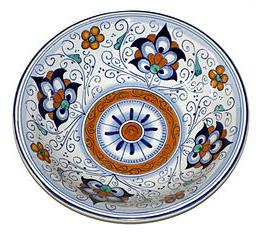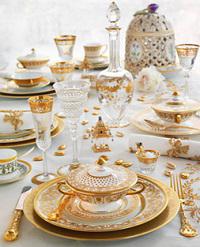Earthenware - beauty and elegance
The spirit of art and creativity, the close connection of the pastand the present still reigns in the Italian city of Faenza - the center of pottery, the birthplace of faience. In the 16th century, the Faenza people started talking about pottery and craftsmanship throughout Europe. In the Renaissance style compendiario, interesting decors of white color became famous throughout Europe. Products outside of Italy began to be called "faiences" - faience.

Earthenware included items fromceramics of all kinds: decorations, plates, tiles and much more. It varied from the most elementary white household items, without ornaments and relief, to works of art. Its popularity has reached even China and Japan. Quite a few porcelain factories appeared in Britain, France, the Netherlands, Russia and other countries. Few people did not hear about the Iranian products with colored painting for cream glaze, blue ceramics from Delft, simple everyday earthenware and other products from Gauda, Rotterdam, Amsterdam, Gzhel art ceramics. Even today, Delft and Gzhel are considered a paradise for lovers of original ceramics.

Today, earthenware is considered a symbol of established life andeveryday life. Earthenware attracts its simplicity, beauty, elegance. Of course, porcelain products are more refined and delicate, light and transparent. Products made of earthenware are made of siliceous clay, they are more durable and heavy, but differ less in thermal stability and mechanical strength. When tapping, they make a dull sound, while porcelain dishes are clear and sonorous. Porous non-transparent tableware made of faience recently is often only covered with colorless glaze, it is decorated not with drawing, but with modeling. But drawings are also common in any color - from blue and blue to black. The faience ware looks simpler than porcelain, but is more functional. It can often be seen in the daily kitchen. The relief surface, colored glaze, the original form of earthenware make the kitchen cozy.


Earthenware requires a certain care. It should not be washed with very hot water. To do this, it is better to use warm water, and to rinse it cold. It can not be put on slabs to dry, as glaze can crack. If the pottery from the faience is darkened, it is necessary to wipe it with salt, baking soda, vinegar, tartaric acid, which will restore her original well-groomed appearance. Stains are removed with warm water with the addition of a small amount of ammonia.








